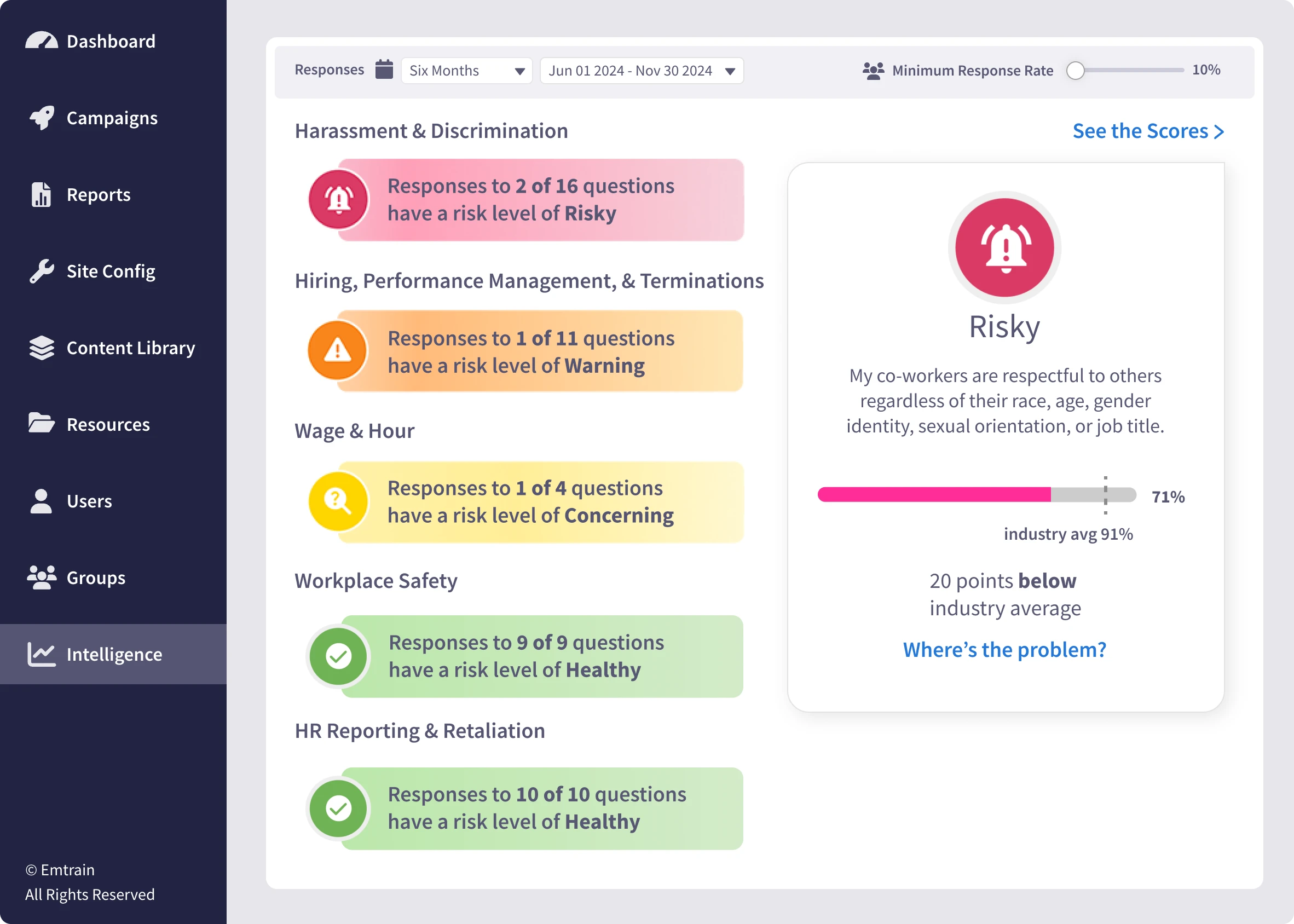Home » Concepts » Discrimination & Harassment » AODA (Accessibility for Ontarians with Disabilities Act)
The Accessibility for Ontarians with Disabilities Act (AODA) is a provincial law enacted in Ontario, Canada, in 2005 with the goal of achieving a fully accessible province by 2025. The Act sets standards to identify, remove, and prevent barriers faced by people with disabilities in key areas such as employment, transportation, customer service, and information and communications. The AODA ensures that accessibility becomes a fundamental component of how organizations operate and deliver services, promoting inclusion and equal opportunity for everyone. For the full legal text, see the Government of Ontario’s AODA Overview and Accessibility Laws and Standards.
Emtrain’s harassment training course is engaging, interactive, and designed to spot and reduce EEO risk.

The AODA builds upon the Ontarians with Disabilities Act (ODA) of 2001, expanding accessibility requirements and introducing enforceable standards. The law mandates that both public and private organizations comply with a series of standards developed in collaboration with stakeholders, including people with disabilities, business leaders, and accessibility experts.
Ontario became the first jurisdiction in Canada to pass such comprehensive accessibility legislation. The AODA’s guiding principle is that disability inclusion should not be seen as a special accommodation but as an integral part of how society operates. Over time, this legislation has inspired broader accessibility frameworks across Canada, aligning with the federal Accessible Canada Act (ACA).
AODA compliance revolves around five integrated accessibility standards:
Emtrain’s Accessibility for Ontarians with Disabilities (AODA) Microlesson introduces these standards through real-world examples, helping employees and managers understand how to apply accessibility principles daily.
Example 1: Accessible Hiring
A hiring manager ensures that job postings include contact information for accessibility requests and that interview rooms are wheelchair-accessible. During interviews, they provide written materials in large print for a visually impaired candidate.
Example 2: Inclusive Digital Communication
An organization redesigns its intranet to meet accessibility standards, ensuring all videos have captions and images include descriptive text. These updates not only meet AODA requirements but also improve usability for everyone.
Example 3: Removing Physical Barriers
A retail company upgrades its storefront with automatic doors and accessible counters, creating a welcoming environment for all customers.
Each of these examples underscores the core purpose of AODA — to foster inclusion by removing barriers to participation in all aspects of daily and professional life.
Organizations operating in Ontario are legally required to comply with AODA standards and file accessibility reports. Beyond compliance, companies should approach accessibility as part of their culture and values.
Steps to strengthen AODA compliance:
Emtrain’s Disability Protections in the Workplace Course provides guidance on accessibility obligations under both AODA and the Americans with Disabilities Act (ADA), helping global teams align on inclusive practices.
Promoting accessibility requires more than meeting compliance standards — it’s about creating a culture of belonging and respect. Here are ways to integrate accessibility into your workplace:
In addition to these practices, organizations can take deliberate steps to enhance inclusion for employees with disabilities. Inclusion is all about embracing people’s differences — yet individuals with disabilities are often overlooked or underestimated in the workplace. Their ideas and perspectives can significantly enhance innovation and teamwork when given equal value. Emtrain’s How to Improve Workplace Quality for People with Disabilities guide offers actionable strategies for building environments where employees with disabilities can thrive, ensuring accessibility translates into genuine inclusion.
The Accessibility Ontario site offers templates, checklists, and compliance support to help organizations meet AODA obligations effectively.
AODA compliance is more than a legal requirement — it’s a moral and cultural commitment to inclusion. By embedding accessibility principles into organizational practices, companies not only meet provincial standards but also create environments where everyone can contribute, innovate, and thrive.
Emtrain’s accessibility and inclusion learning tools — from AODA Training to Disability Protections in the Workplace — empower organizations to turn compliance into compassion, ensuring accessibility becomes part of every workplace conversation.
This short Emtrain video scenario follows an employee recovering from a shoulder injury who must attend recurring doctor appointments for treatment. When the employee informs their manager, the conversation becomes a real-time example of how workplace accommodations should be handled under accessibility laws like the AODA and ADA.
The manager listens empathetically, discusses possible scheduling adjustments, and ensures the employee can continue contributing effectively without fear of retaliation or stigma. This clip highlights how open communication and understanding can transform compliance into compassion — turning accessibility from a policy requirement into a daily leadership practice.
The video reinforces key AODA principles: ensuring employees with disabilities or medical conditions receive fair treatment, individualized support, and equal opportunity to succeed at work.